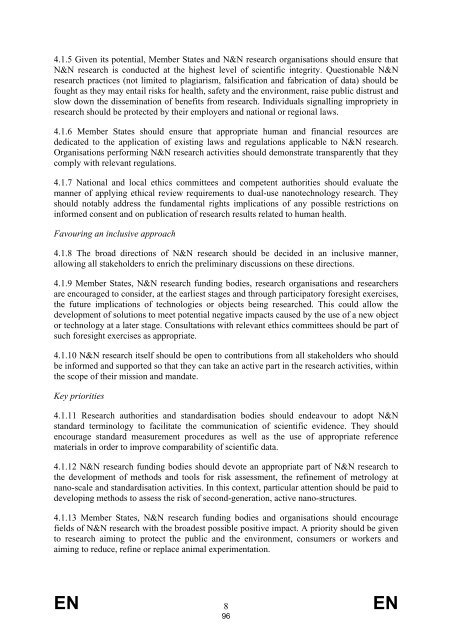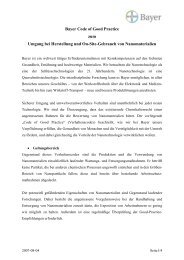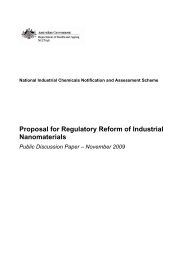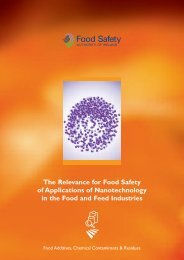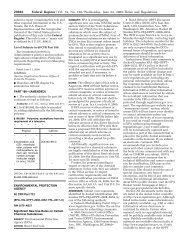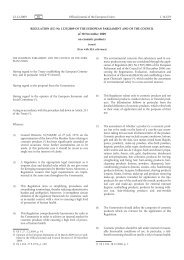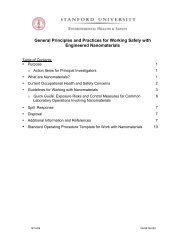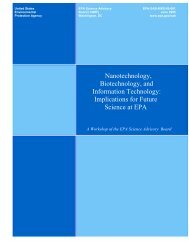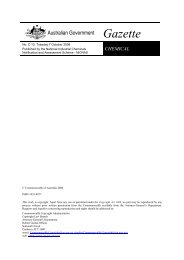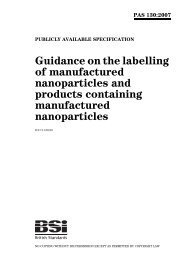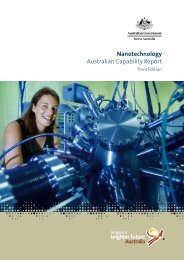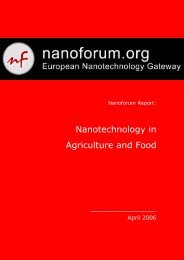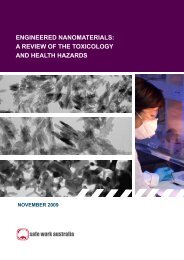Nanotechnology - Nanotech Regulatory Document Archive - Arizona ...
Nanotechnology - Nanotech Regulatory Document Archive - Arizona ...
Nanotechnology - Nanotech Regulatory Document Archive - Arizona ...
You also want an ePaper? Increase the reach of your titles
YUMPU automatically turns print PDFs into web optimized ePapers that Google loves.
4.1.5 Given its potential, Member States and N&N research organisations should ensure that<br />
N&N research is conducted at the highest level of scientific integrity. Questionable N&N<br />
research practices (not limited to plagiarism, falsification and fabrication of data) should be<br />
fought as they may entail risks for health, safety and the environment, raise public distrust and<br />
slow down the dissemination of benefits from research. Individuals signalling impropriety in<br />
research should be protected by their employers and national or regional laws.<br />
4.1.6 Member States should ensure that appropriate human and financial resources are<br />
dedicated to the application of existing laws and regulations applicable to N&N research.<br />
Organisations performing N&N research activities should demonstrate transparently that they<br />
comply with relevant regulations.<br />
4.1.7 National and local ethics committees and competent authorities should evaluate the<br />
manner of applying ethical review requirements to dual-use nanotechnology research. They<br />
should notably address the fundamental rights implications of any possible restrictions on<br />
informed consent and on publication of research results related to human health.<br />
Favouring an inclusive approach<br />
4.1.8 The broad directions of N&N research should be decided in an inclusive manner,<br />
allowing all stakeholders to enrich the preliminary discussions on these directions.<br />
4.1.9 Member States, N&N research funding bodies, research organisations and researchers<br />
are encouraged to consider, at the earliest stages and through participatory foresight exercises,<br />
the future implications of technologies or objects being researched. This could allow the<br />
development of solutions to meet potential negative impacts caused by the use of a new object<br />
or technology at a later stage. Consultations with relevant ethics committees should be part of<br />
such foresight exercises as appropriate.<br />
4.1.10 N&N research itself should be open to contributions from all stakeholders who should<br />
be informed and supported so that they can take an active part in the research activities, within<br />
the scope of their mission and mandate.<br />
Key priorities<br />
4.1.11 Research authorities and standardisation bodies should endeavour to adopt N&N<br />
standard terminology to facilitate the communication of scientific evidence. They should<br />
encourage standard measurement procedures as well as the use of appropriate reference<br />
materials in order to improve comparability of scientific data.<br />
4.1.12 N&N research funding bodies should devote an appropriate part of N&N research to<br />
the development of methods and tools for risk assessment, the refinement of metrology at<br />
nano-scale and standardisation activities. In this context, particular attention should be paid to<br />
developing methods to assess the risk of second-generation, active nano-structures.<br />
4.1.13 Member States, N&N research funding bodies and organisations should encourage<br />
fields of N&N research with the broadest possible positive impact. A priority should be given<br />
to research aiming to protect the public and the environment, consumers or workers and<br />
aiming to reduce, refine or replace animal experimentation.<br />
EN 8 EN<br />
96


